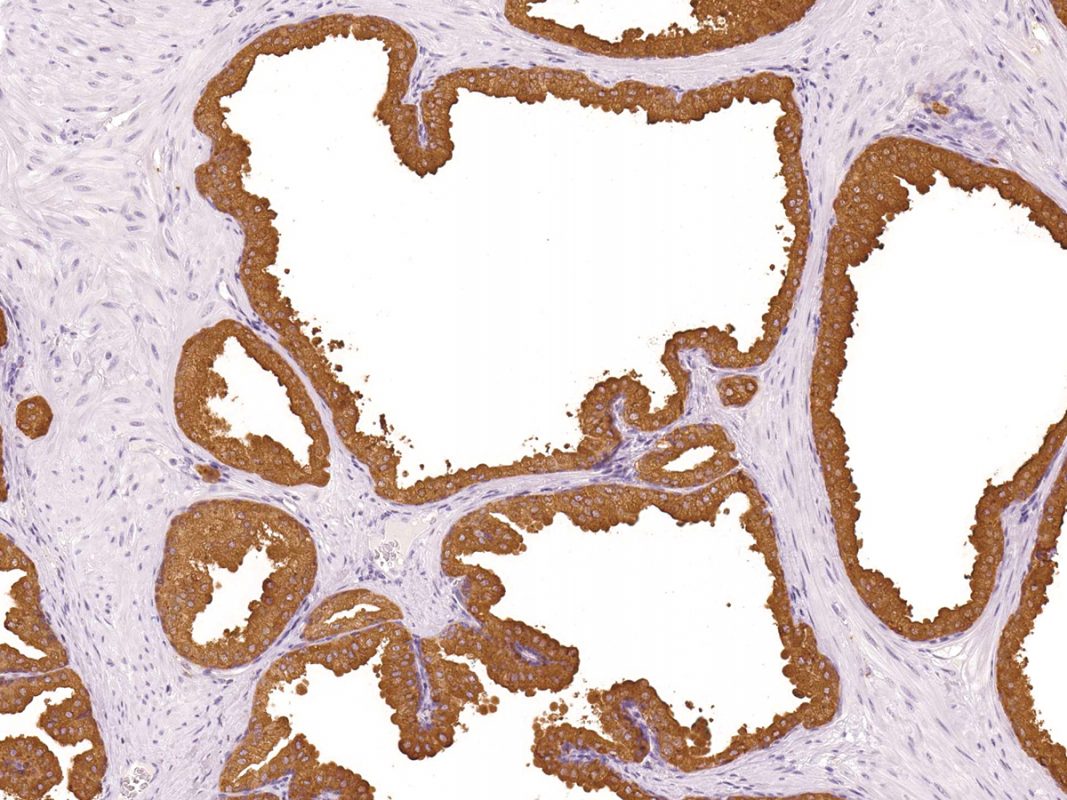News from QED Bioscience
Chemistry of Formalin Fixation
Formalin is the fixative used most often for newly-obtained specimens as well as in archived paraffin blocks. Ever wonder how it works?
Mechanism of Formalin Fixation
Formalin (a solution of formaldehyde in water) preserves proteins and cellular organelles in a stepwise process. It penetrates tissues quickly then binds to lysine, tyrosine, asparagine, tryptophan, histidine, arginine, cysteine, and glutamine in all of the proteins present in a specimen. It is the reaction between formalin and uncharged reactive amino groups that leads to the formation of cross-links.
Formalin fixation is not selective, so cross-linking of target proteins with unrelated proteins can reduce immunoreactivity with target-specific antibodies. In addition, cross-linking can lead to significant changes in the three-dimensional conformation of proteins which may also reduce immunoreactivity. Fortunately, antigen retrieval methods, such as heat-based or enzymatic procedures, can reverse the undesirable changes caused by fixation. Antigen retrieval is more frequently needed with monoclonal antibodies (MAbs) vs. polyclonal antibodies (PAbs). By definition, a MAb recognizes only one epitope on an antigen, so if that epitope becomes unavailable due to unwanted cross-linking events, a MAb will appear to be unreactive with a sample. In contrast, PAbs are a mixture of multiple epitope specificities, so there is a greater probability that some of the epitopes recognized on a target antigen by a PAb will remain sufficiently unaltered to allow for reactivity of that PAb with a sample.
Over-fixation, under-fixation, perfect fixation
Over-fixation of tissues can produce false-negative results due to excessive cross-links, but the negative effects of over-fixation can often be reversed with an appropriate antigen retrieval procedure. The effects of over-fixation are somewhat dependent on the cellular location of the target antigen; over-fixation of nuclear antigens may not be reversible while cytoplasmic antigens may not be affected by over-fixation or can be recovered after antigen retrieval.
Under-fixation of tissues may result in cross-links forming only on the exterior of a sample and the center of the sample remaining unfixed. This can result in an inconsistent gradient of staining that is difficult to interpret. In addition, under-fixed tissues are more susceptible to damage or distortion caused by antigen retrieval methods.
Unfortunately, there is no universal fixation time that is perfect for every antigen, so fixation protocols must be optimized for time as well as temperature. Fixative penetration, binding to amino acids, and cross-linking occur faster at higher temperatures, and the thickness of samples to be fixed shouldn’t exceed 4mm to allow for complete penetration of fixative.
Formalin is the “gold standard”
Although health hazards have been associated with exposure of skin, eyes, and the respiratory tract to formalin, most labs take the necessary precautions and continue to use formalin because they cannot find a satisfactory replacement that is equally reliable, inexpensive, and whose negative effects can be readily reversed with antigen retrieval. Evaluation of alternative fixatives will undoubtedly continue with formalin as the comparative “gold standard”.
For a thorough review of the technical aspects of IHC, see Ramos-Vara, JA and Miller, MA Veterinary Pathology5: 42-87 (2014).


